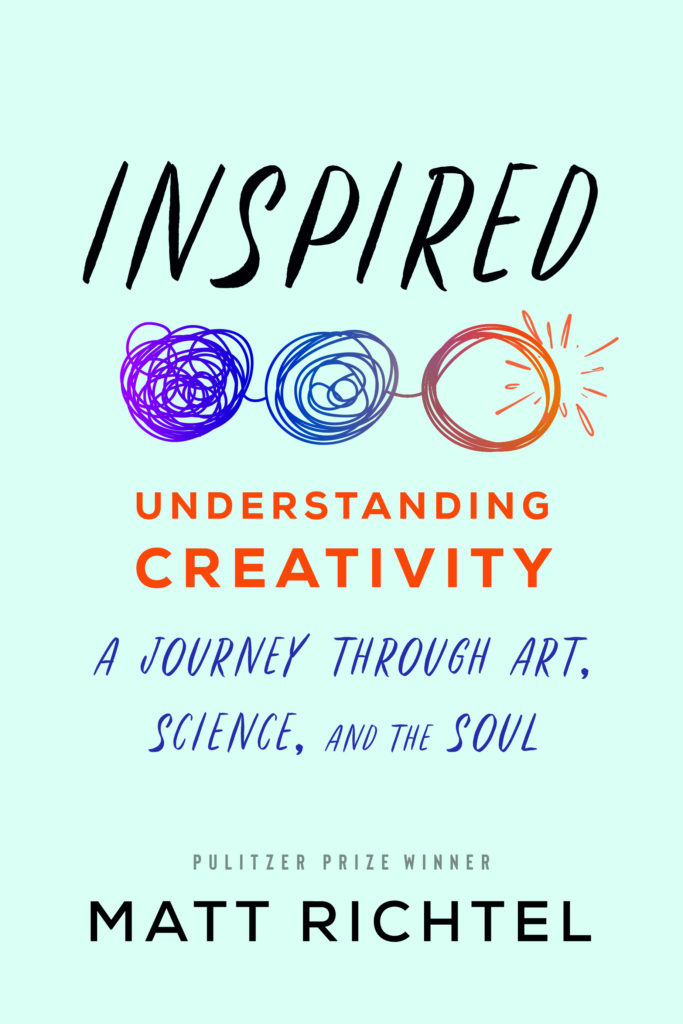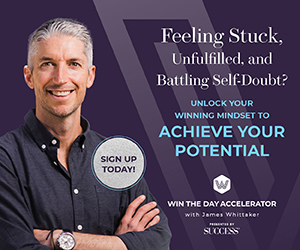So you want to be a creator?
You have ideas. You think of them before you go to sleep. You’ve mentioned them at cocktail parties, to your spouse, to friends who have started businesses, to fellow engineers, to people who play guitar or do comedy at open mic nights. You have a family member who is a screenwriter. You’ve heard yourself say sheepishly, “I’ve had this idea… ” or “Can I tell you my idea… “ and then your voice peters out.
Or maybe you’re not sure you have ideas. You sense that there could be one or two innovations in your pocket.
But what do you know from creativity? What business do you have pursuing the big and little C-words? Does it have anything to do with you?
Before I tell you that you know more than you think you do and that the steps are much more accessible then you imagine, I must first explain the hidden barrier. I refer here to the D-words. There’s the big D-word, Doubt. Then there’s the little D-word—disgust.
Yes, creativity might disgust you, if you’re honest. It’s terrifying. Vomit-inducing, like a toxin.
Check out the science.
_______
Powerful research comes from Dr. Jack Goncalo, a highly innovative thinker about creativity who, along with two collaborators, asked themselves a question: Do people really like creativity and creators?

This seems like a brainless question. Really? Do people really like creativity? Do we really like ice cream, puppies, rainbows?
In reality, the question they were asking is a fantastic one. In journalism circles, we sometimes call this kind of inquiry “the smart-dumb question.” The idea behind such a question is that it takes an idea we think we are absolutely certain we know the answer to and asks if we really are, in fact, absolutely certain. Have we taken a basic assumption for granted?
Goncalo, to me, is one of the more interesting researchers in the field of creativity who, time and again, asks such questions. He’s uncovered multiple insights, hidden gems about the process and psyche of creators. He teaches in the College of Business at the University of Illinois at Urbana-Champaign, but at the time of the study about creativity and fear, he was posted at Cornell University, collaborating with researchers at the Wharton School at the University of Pennsylvania and at the University of North Carolina. Sometimes it takes very smart people to ask smart-dumb questions.
The question he and his fellow scientists posed in 2010 led to a paper published in 2012. In the paper’s first paragraph, they state their premise: “Do people desire creative ideas? Most scholars would answer this question with an obvious ‘yes,’ asserting that creativity is the engine of scientific discovery and the fundamental driving force of positive change. Furthermore, creativity is seen as being associated with intelligence, wisdom and moral goodness.”
However, the premise continues, research also shows that companies, research centers, leaders and others “routinely reject creative ideas,” and teachers “dislike students who exhibit curiosity and creative thinking.”
You might too.
“We offer a new perspective,” the research says, “to explain this puzzle.”
_______
Goncalo and his fellow scientists ran two experiments. The first split research participants into two groups. One group was told they could receive extra money that would be distributed by a random lottery. They could get cash but couldn’t control the outcome. The other group did not get any offer of a bonus.
This condition had the impact of making the lottery group feel uncertain.
The researchers then used an established research tool to measure how each group felt about creativity—not just how they said they felt on a conscious level, but also how they felt subconsciously. This is a kind of research that gets at what is known as “implicit bias.” It’s the same kind of research, broadly, that can be used to study how people feel about others of different races. People say one thing about creativity but, on a deep level, feel conflicted.
The researchers established through a questionnaire that study subjects expressed generally positive feelings about creativity. This was their “explicit” or stated belief system.
Then the researchers sought to unearth feelings that lurk below the surface. Using a clever computer program, they asked study participants to react so quickly to information that they didn’t really have time to “think.” They just react.
This particular study involved having participants react to adjectives like “novel” and “original,” along with terms that are less associated with creativity like “practical” or “functional.”
In this research, these words and related terms were paired side by side on a computer screen with two different categories of images. Some of the images had positive associations, like rainbows, heaven and cake. Others had decisively negative associations, like vomit, hell and poison. When these study subjects responded in a rapid-fire manner, without thinking, their subconscious, hidden views of creativity emerged.
On a visceral level, creativity felt toxic, the study revealed. “People actually had a strong association between the concept of creativity and other negative associations like vomit, poison and agony,” Goncalo told me.
The subset of study subjects in the “uncertain” category—who didn’t know if they’d get money—were even more likely than the control group to have negative associations with creativity.
What this suggested to researchers is that people say they like creativity, but they also like stability. So when things feel unstable or uncertain, they are more likely to reject creativity because it suggests even greater chaos.
“People want creativity and stability,” Goncalo said.
It can be difficult to have both.
_______
Creativity is disruptive. Creativity means changing how we relate to the world, go through our day-to-day lives, what we eat, listen to, watch, how we interact with one another. Creativity changes long-accepted behaviors, technology and basic social contracts. It can be wrenching.
While this seems obvious upon reflection, it’s not what we tell ourselves. “Saying you don’t want creativity is like saying you don’t like hope,” Goncalo observed.
It would be hard to understate the significance of this finding in a modern world filled with change and chaos. It is even possible to explain some of the rise of more authoritarian governments or leaders in some countries as a reaction to immense and fast-moving change. The advancements and innovations people say they crave, and many people authentically do, can run headlong into competing cravings they and others have for stability.
From a biological perspective, the origin of this tension derives from a deeper association: Creativity is death.
_______
New ideas pose the threat of extinction in two different ways. This is not metaphorical but rather is drawn from the biological. In brief, the idea is that new forms of life and new ideas are almost always destined to fail. When viruses or bacteria mutate by accident, and when new combinations of cells emerge inside our bodies, these cells almost always die because they don’t fit as well into the environment as the forms of life that came before. This is true of many ideas. Most don’t work. They die off.
There’s another way, though, in which change equals death. When the new forms of life, or ideas, do succeed, they displace what came before—and kill the past. New ideas kill habits, businesses, power structures, jobs.
In the biological world, new life-forms can take over the landscape from the older forms of life less suited to a changing environment.
You are darn right creativity is scary.
So is the call of inspiration.
_______
Given the finding that people harbor subconscious bias against creativity, Goncalo and his peer researchers then asked a second question: Does that mean people might have trouble actually recognizing creativity when they see it? In other words, if people associate the process of creativity with vomit, might they conflate actual creativity with disgust?
This is precisely what the researchers found when they showed a new running shoe to two different groups: people who identified as having considerable tolerance of uncertainty, and those with less tolerance.
This new running shoe, the researchers told the study subjects, uses nanotechnology to “adjust fabric thickness to cool the foot and reduce blisters.”
The people in the higher-tolerance group were more likely to see it as creative, the others less so. This finding, while not startling, particularly given the results of the implicit bias study, reinforces the kinds of conditions and people that are more conducive to creativity. Uncertainty and instability yield infertile ground for new ideas.
Examples abound from history where a new idea that would ultimately become accepted as highly relevant, even brilliant, was initially received as noxious.
_______
In 1872, Claude Monet debuted a painting called Impression, Sunrise. It’s a moody swirl of morning on the water as fishermen row to sea, a red-tinged sun rising in the distance.
Critics ripped it to shreds.
The painting now hangs in Paris’s Musée Marmottan Monet, one of the world’s greatest art museums—one that bears his name—and he is heralded as among the greatest of the grand artistic innovators. You could buy this wallpaper drawing for about a trillion dollars if it was ever for sale.
Centuries earlier, Galileo made people so desperately want to throw up that he was convicted of heresy for declaring that the Earth revolves around the very sun Monet had so creatively drawn. ’Nuff said.
Adapted from the book INSPIRED: Understanding Creativity: A Journey Through Art, Science, and the Soul by Matt Richtel. Copyright © 2022 by Matt Richtel. From Mariner Books, an imprint of HarperCollins Publishers. Reprinted by permission. Photo by Monkey Business Images/Shutterstock







